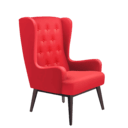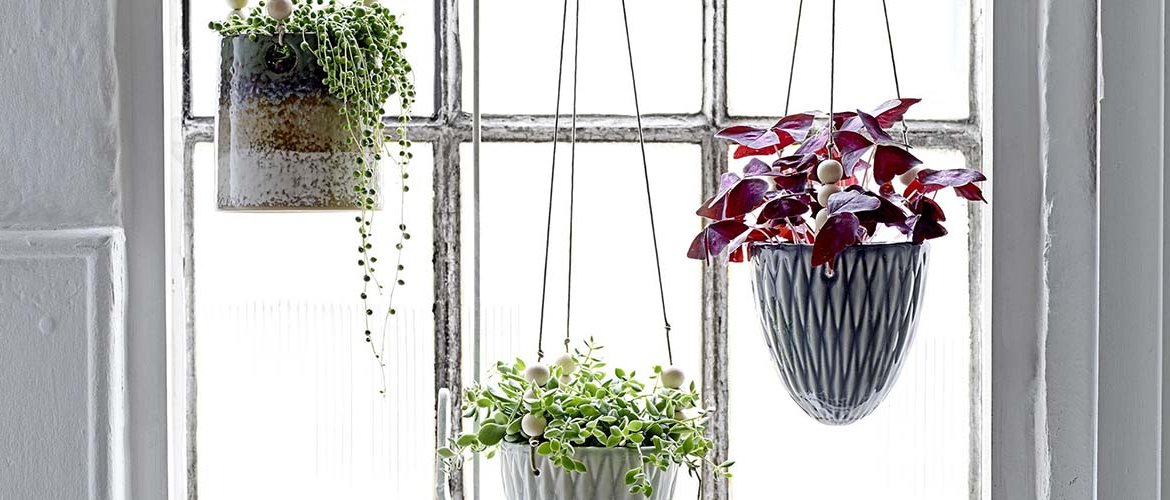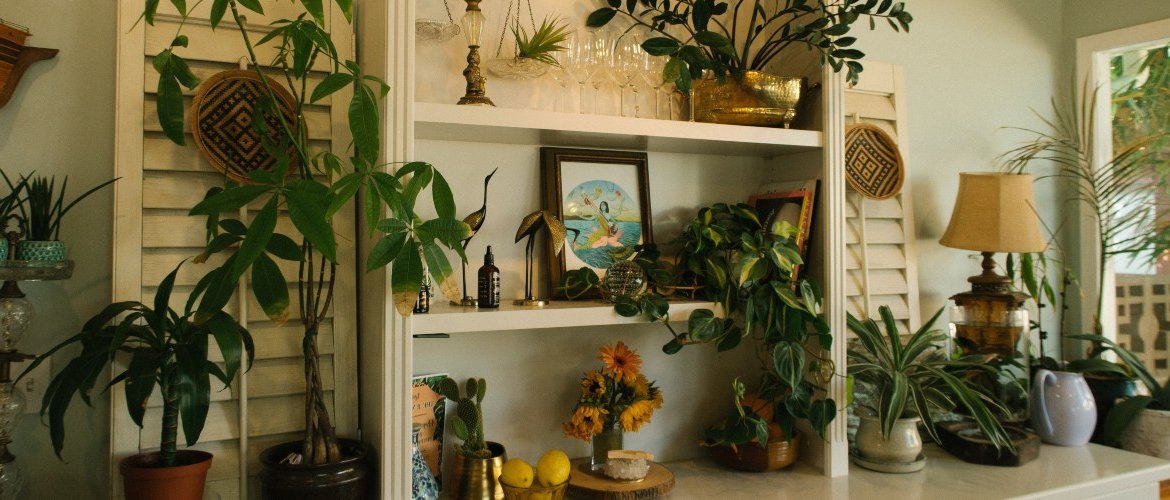10 different ways to hang the TV in the living room
A few weeks ago we dedicated an article to the living rooms without TV, a paradise for every interior designer to not have to condition the decoration of the room to this element.
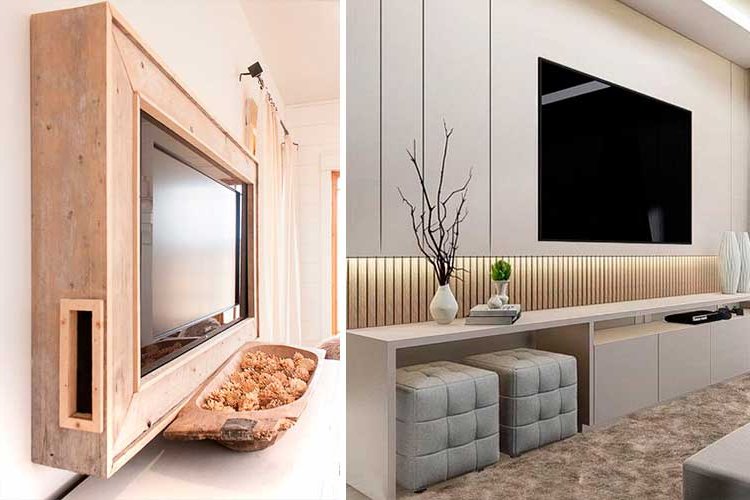
However, let's not fool ourselves, in 95% of homes there is a television in the living room and in 90% of them it plays a leading role.
In fact, with the rise of streaming platforms, a pandemic that has long emptied movie theaters, and changing lifestyle habits, the trend in homes is actually toward larger and larger TVs.
Those who opt for a luxury product, with designer TVs, tend to give the TV quite a bit of presence and don't mind displaying it gracefully.
However, if you opt for cheap TVs, with no other interest than to use it for the function it has (watching TV) but value the interior design, you probably want it to go as unnoticed as possible.
Whatever your preference, in this post we are going to see 10 ways to hang the TV so you can choose the one that best suits you and your TV.
Here we go!
1. Leaning on the cabinet
We start with the most common option, the one that is present in most homes.
It is simply a matter of resting the TV on a more or less high, more or less wide and more or less deep piece of furniture, bringing the cables through the back to a socket placed halfway between the floor and the top of the furniture.
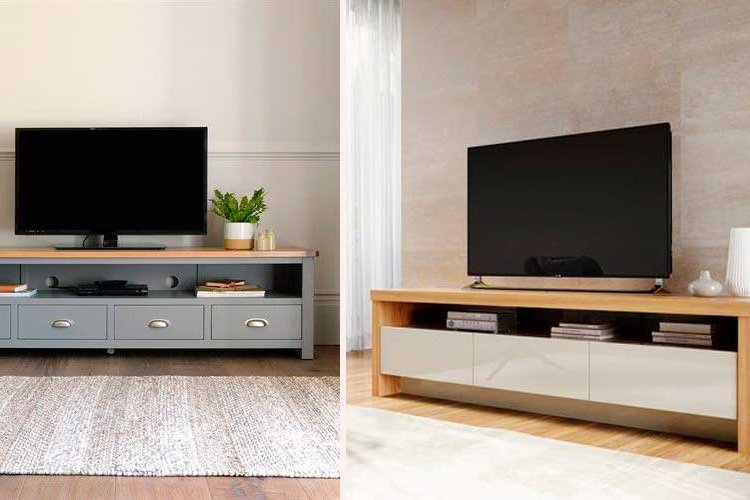
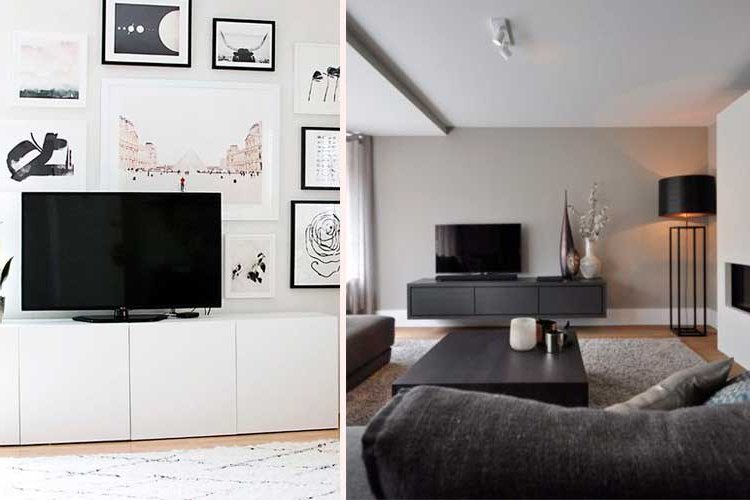
It is the ideal option when you can not reform your home and the one that least complicates our existence, although in these cases, it is better to choose a television that has a system designed from behind to channel the cables and not have to see them from behind or from the side.
2. Hanging on the wall
The second favorite option in the homes of half the planet despite having several drawbacks.
It consists of hanging the TV directly on the wall as if it were a painting, with the advantage that we can place it at the height that suits us (unlike the previous case, which conditions the furniture).
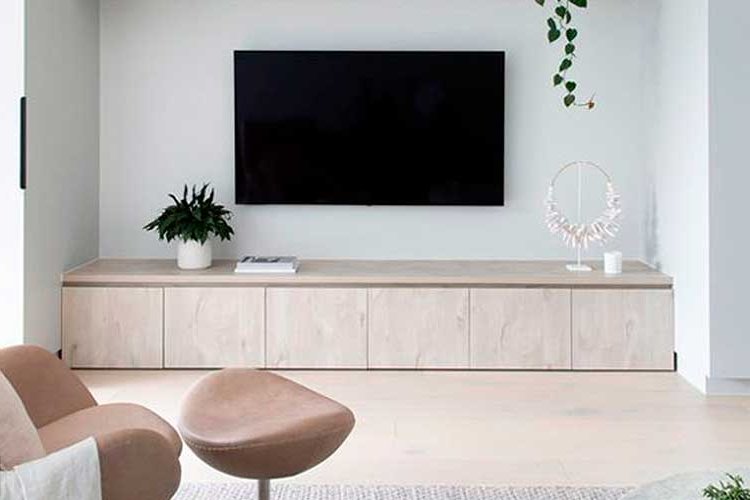
The problem with this option is that it requires prior work, as the sockets have to be placed so that they are behind the TV so that they are not seen, and perhaps bring pipes to other areas.
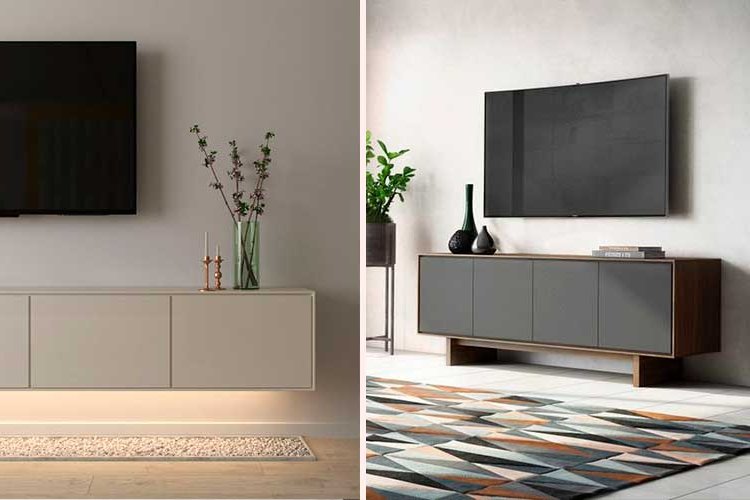
Because no, the option of placing a power strip and that is seen below the TV to reach a socket is NOT an option. It is a want and I can not and it looks horrible, for that it is much better to rest on the furniture.
Another disadvantage of this option is that if we enter the living room "on edge", it is almost impossible not to see the wiring that is hidden behind the TV. And in addition, if in the future new technological devices appear that force to connect them to the TV as it happens with the router, with this option we have it badly...
3. Hanging from a panel
It is an option similar to the previous one but instead of hanging the TV directly from the wall, it would be hung from a panel or back panel.
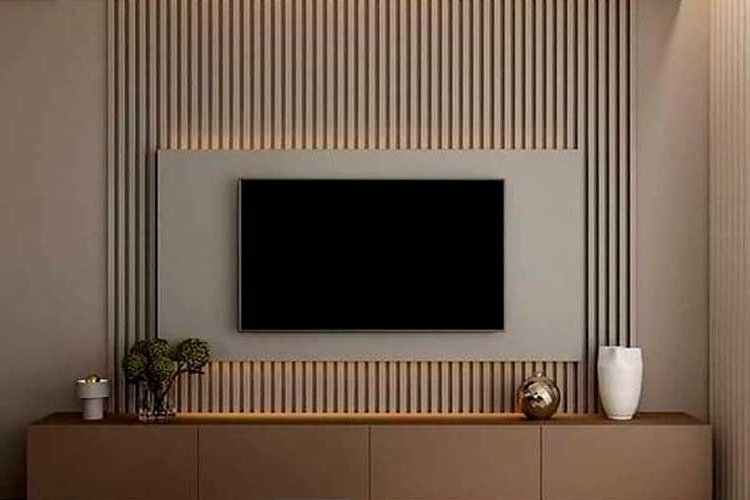
This option solves the problem of the cables, because many times these rear panels are designed to carry the cables inside or behind so that even from the edge we would not have to see them.
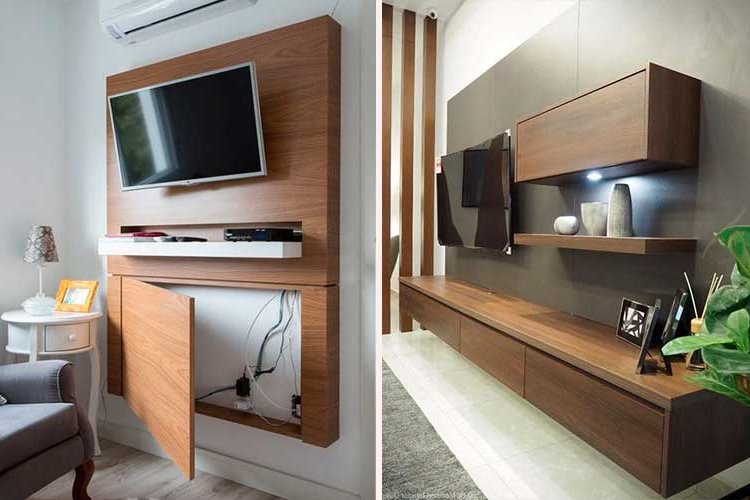
Also, if in the future we need to run more wires elsewhere for a new device, they usually have some sort of inner tube to run them through.
As if that were not enough, the back itself can give a decorative touch to the wall without the need to dress it with anything else.
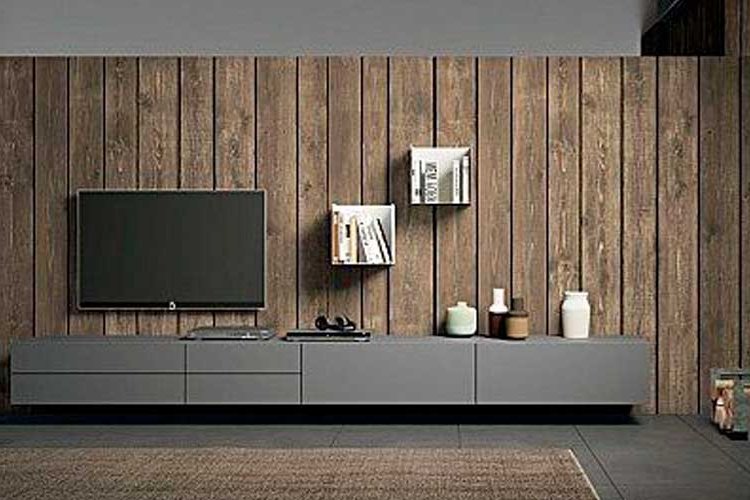
4. Tucked in a niche
This option also requires work or carpentry but it is cleaner than the panel (as it can be blended with the wall) and eliminates the problem of seeing the cables on edge as it happened in the case of hanging it on the wall as it is.
What is done in this case is a false plasterboard partition in front of the usual partition to which is made a rectangular recess proportional to the shape of the TV and then hang the TV at the bottom, so that the wiring can not be seen edge because it prevents the niche.
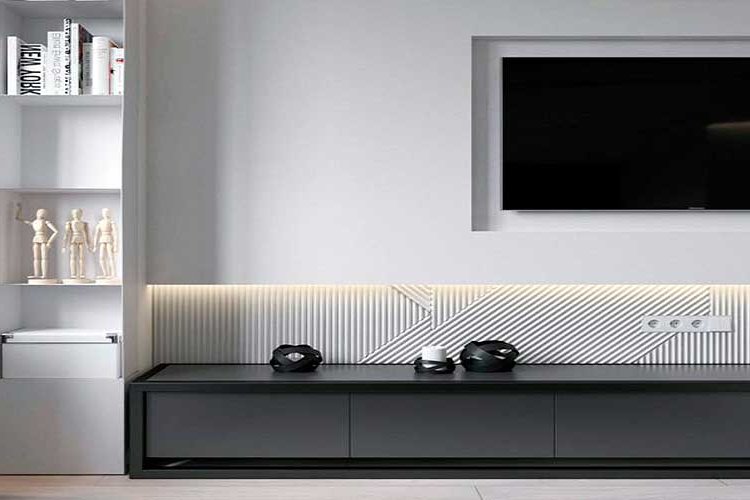
It can also be made to measure with carpentry work embedding the TV in a piece of furniture made ad hoc for the requested space and can give the niche a different tone or material to the rest as a frame.
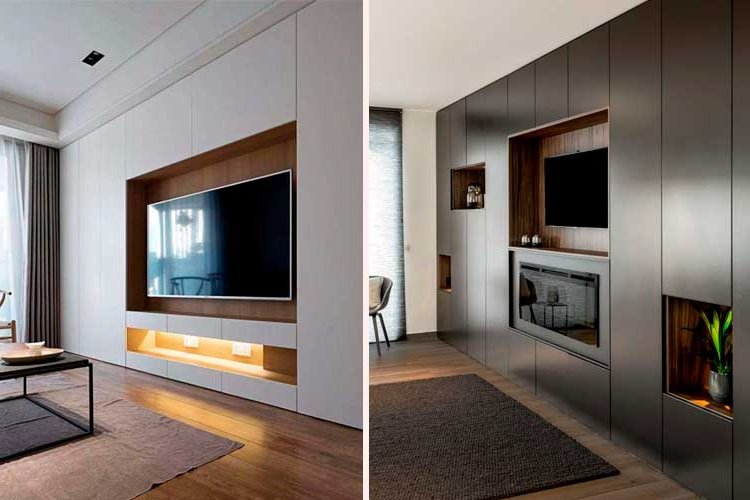
5. On the chimney
The chimneys are usually placed on blocks that protrude from the wall in order to carry the flue from behind.
In this way, we can take advantage of these blocks to place the TV on top, although in these cases it is necessary to protect the chimney area very well with fireproof rock wool and protective sheets so that when it is on the heat does not affect the TV.
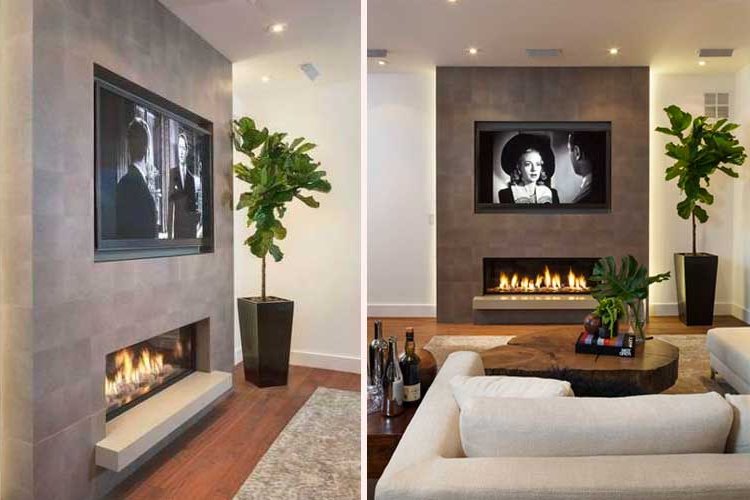
In addition, as the blocks are usually deep, this allows us to make a recess or niche very close to the tv so that we do not have to see it from the side.
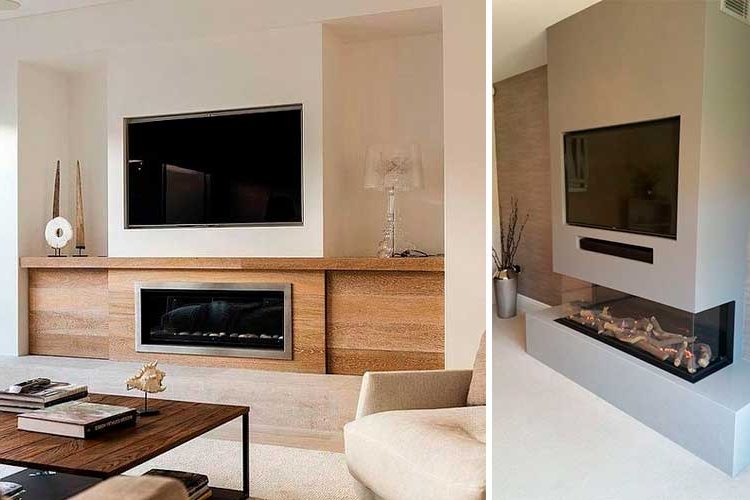
6. On a shelf
It is a somewhat different way to place the TV and allows us to take advantage of all the surrounding space for storage.
It is ideal in small spaces where we have to take advantage of every cm, or in informal styles where we want the TV to go more or less unnoticed among other elements.
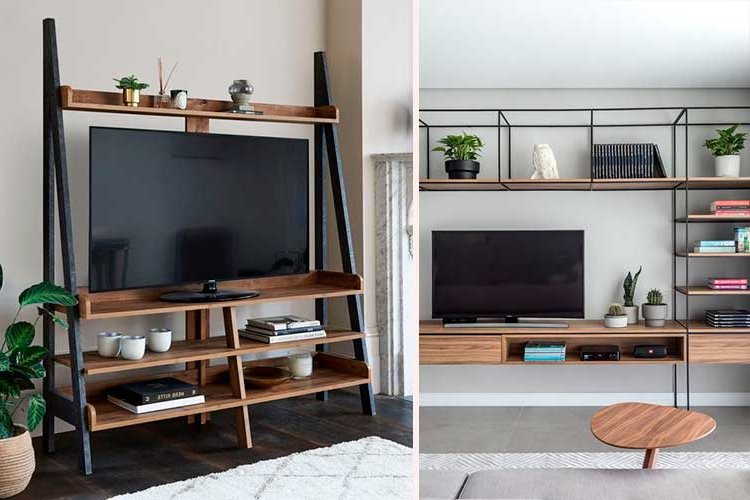
7. In a rotating piece of furniture
Sometimes, the configuration of the living room or the seats force us to have to turn the TV on certain occasions.
For example, you may have the living area on one side of the living room and the dining area on the other and want to watch TV from both sides.
For that, the TV can be hung on swivel furniture that are already designed to hang the TV on them.
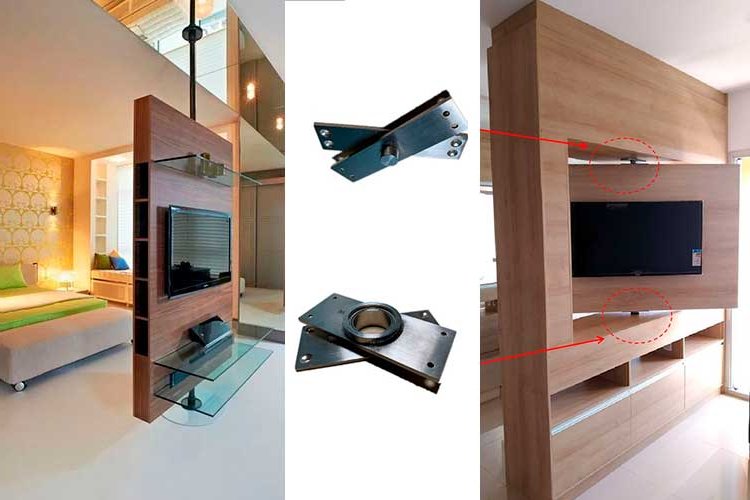
The most common is the one that has a back where the TV is hung and it is the one that rotates at 45, 90 or even 180º.
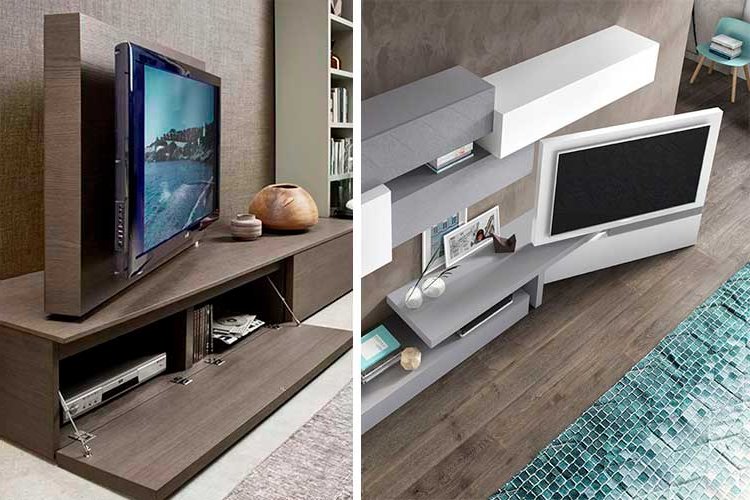
Other times it only has a simple back supported on the furniture that rotates from the wall with an articulated arm (a less aesthetic option when the TV is rotated but more economical).
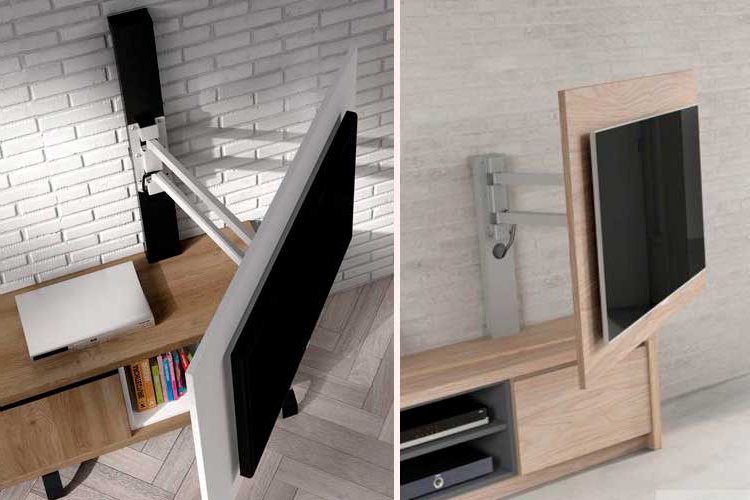
Finally, on other occasions it is the furniture itself that rotates completely, in these cases being a freestanding piece.
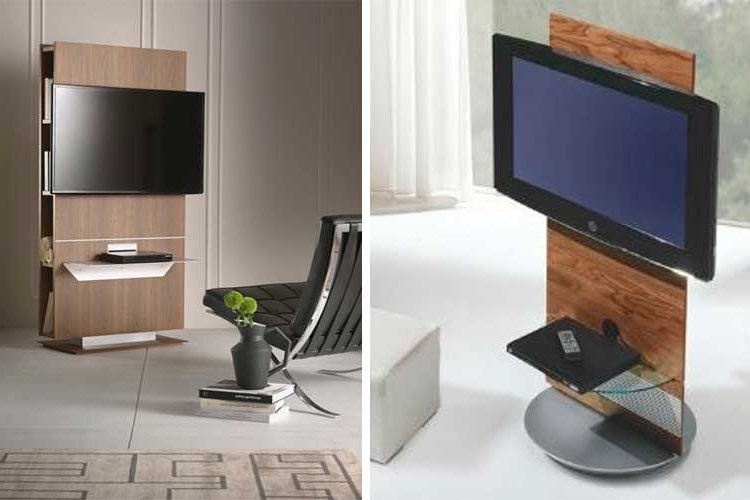
8. Mimetized with the background
One option to make the TV go unnoticed without having to put it in a hidden piece of furniture is to make it blend in with the background so that, unless it is on, it is practically unnoticeable.
To do this we need to create a dark atmosphere behind the TV, either with anthracite paint on the wall, coating it with slate effect porcelain or with a set of woodwork in charcoal gray or black tones.
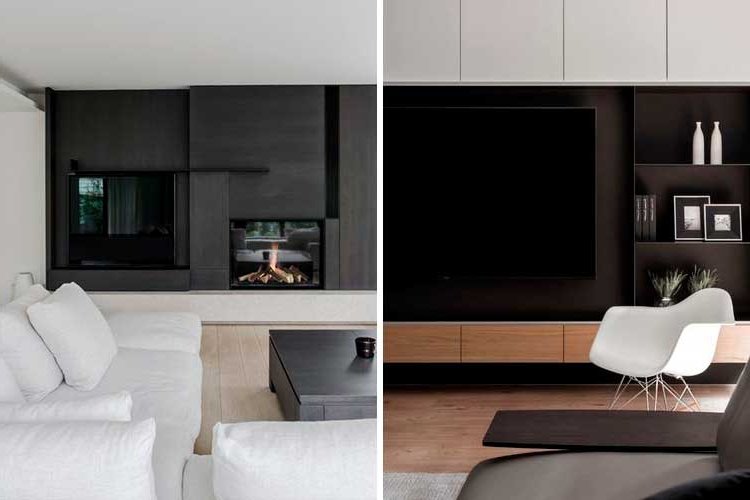
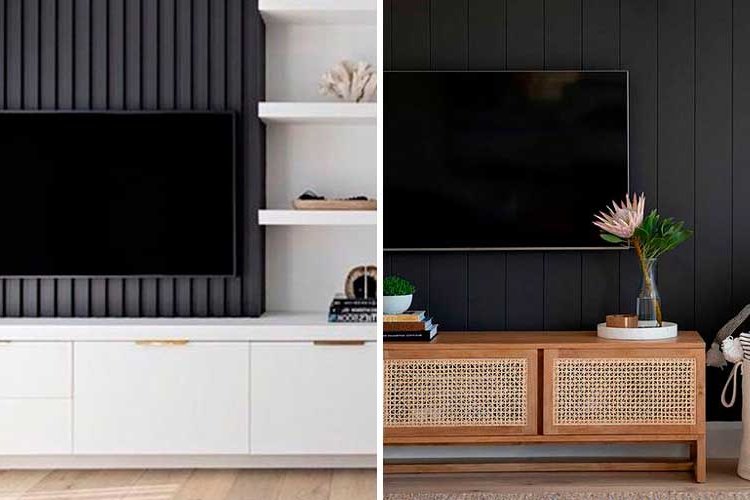
9. As part of a gallery
This is a very original option that takes away the prominence of the TV in the living room by integrating it into a gallery of pictures or plates.
The idea is to hang the TV so that it is just "one more". In this way, by surrounding the TV with plates of different sizes and formats, the eye captures the composition without focusing on a particular element and thus loses importance.
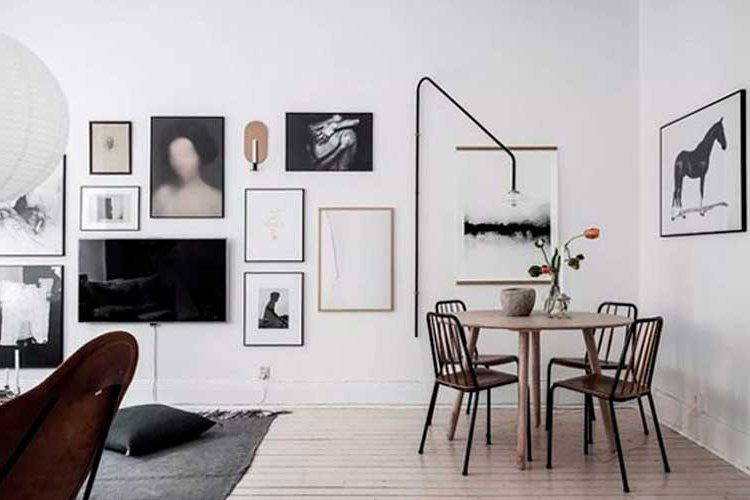
The ideal for this is that the television is hung on the wall, but if for whatever reason it is not possible, you can always fill the back wall of sheets so that, without being a composition to use, at least it seems.
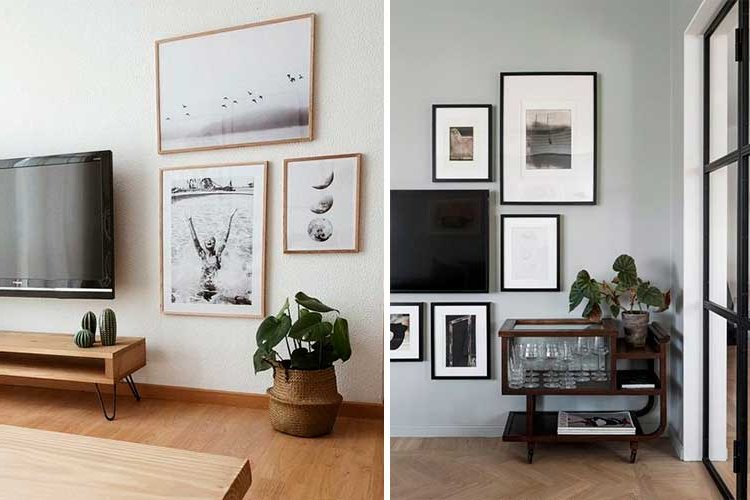
10. Integrated in a cabinet
Finally, one option we have is to take advantage of the wall to create a whole piece of storage furniture in which a small central area to leave the wall and we can take advantage of all the rest from top to bottom.
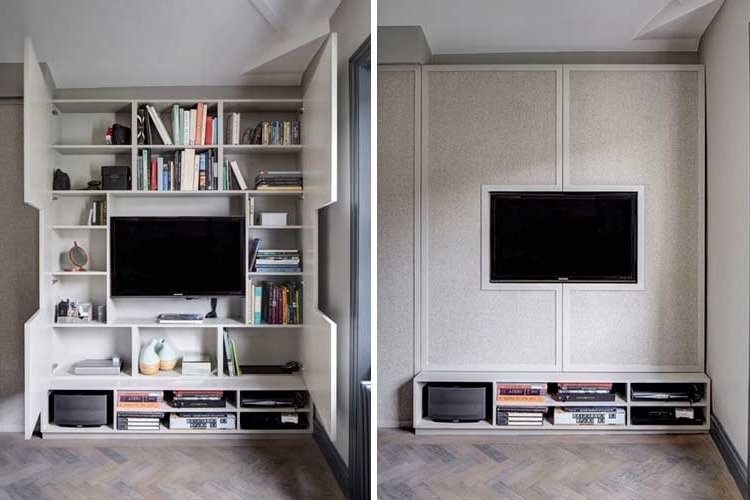
We can create an entire cabinet with hinged doors in the shape of the TV, or drawer only the central area with shelves behind and have all the rest of the space as if it were a normal closet.
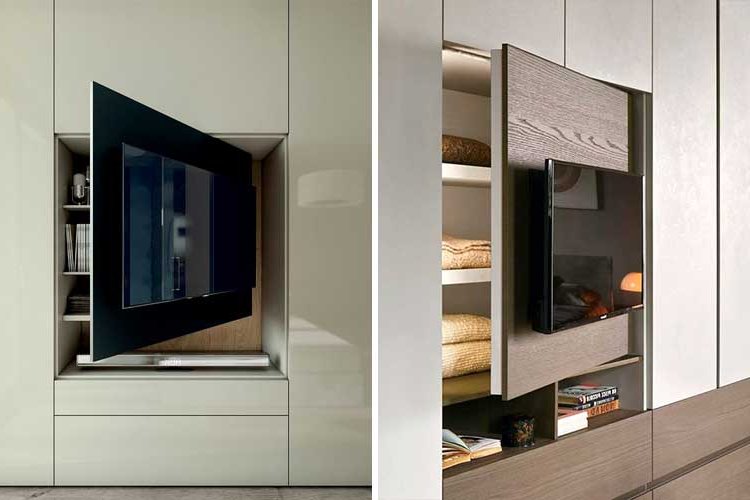
As you can see, there are many ways to hang the TV in the living room, not counting complete concealment systems, which also give for much and we will see them another day 😊.

